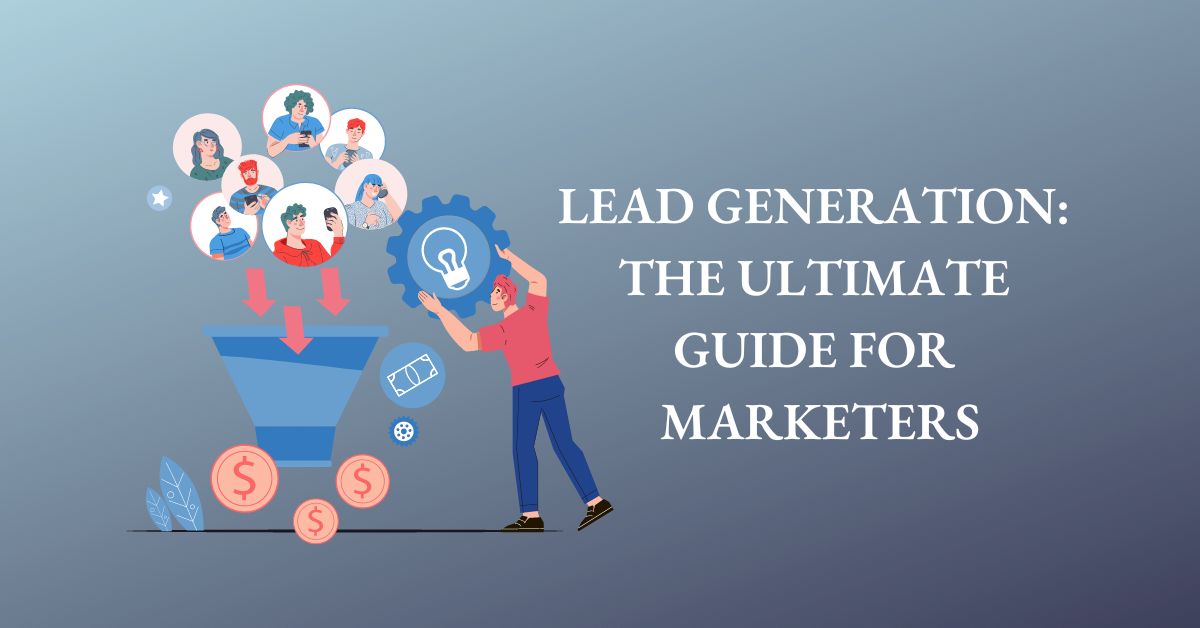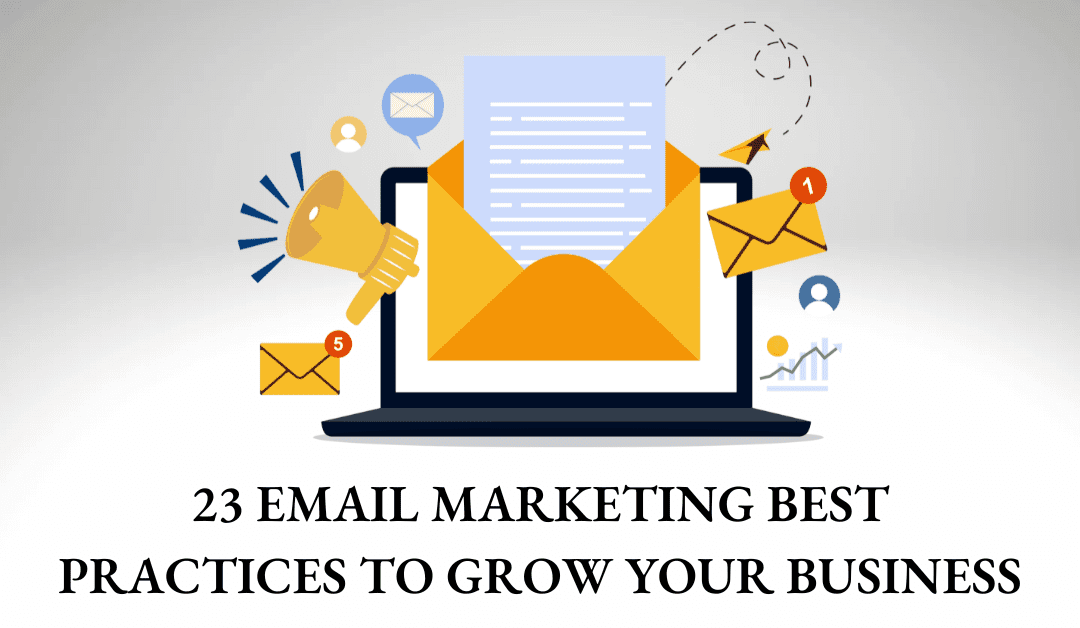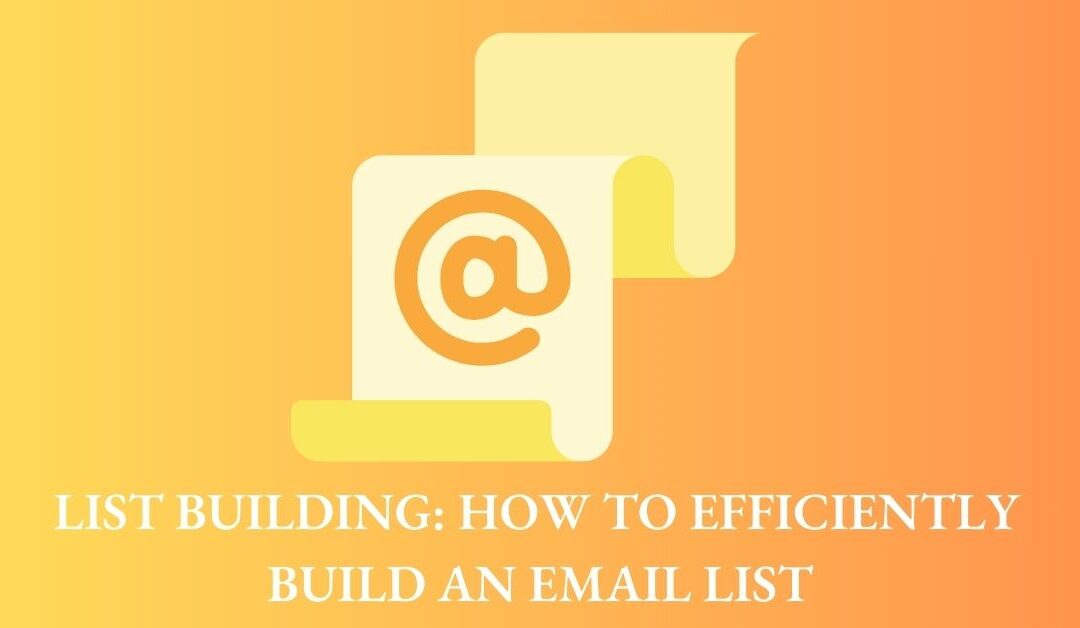Lead generation is an essential component of marketing campaigns. A user goes through several stages before turning into a customer, and this transition process from a stranger to a customer is called lead generation. I will discuss lead generation benefits, types, strategies, and best practices in this guide. But first, let’s see what lead generation is.
What is Lead Generation?
Lead generation is a business marketing process of attracting leads and nurturing them to turn into customers. A lead refers to a person who is likely interested in buying your products or services and has the potential to become a customer. Leads can express their interest in your business in various ways, such as by subscribing to your email list or downloading a resource.
To generate leads, you identify and attract people interested in your products or services and enhance their interest to convert them into customers. After generating leads, you can boost their interest in your products by targeting them with marketing material and offerings. As a result, the leads will likely turn into customers.
Why is Lead Generation Important?
Most businesses have limited resources and marketing budgets. Utilizing marketing efforts to target and engage with those interested in your business can save you a lot of energy and money. In other words, targeting leads is much more beneficial for businesses than targeting everyone.
The following are some of the many benefits you can gain from lead generation:
Brand Awareness
Since leads are likely interested in your business, engaging with them enables you to educate them more about your brand. With suitable marketing material, you can make them aware of your brand and enhance their understanding of your offerings. Therefore, lead generation helps businesses boost brand awareness.
Target the Right Prospects
Compared to the general audience, leads are more likely to convert into customers. Most of them have shown some interest in your business by providing their contact information. You can convince them to proceed with the sale with the right marketing approach. Therefore, the lead generation process ensures you target the right prospects, i.e., the leads.
Help Collect Information of Potential Customers
Strangers turn into leads by interacting with your brand through an online lead generation form. They can convert into leads in several ways, such as subscribing to your newsletter, trying a free demo, requesting a free quote, or initiating an inquiry. Regardless of how you generate leads, you get access to valuable information about them, including their interest and needs. Such information helps segment the leads and target them with tailored marketing campaigns.
Increase in Revenue
Targeting the right prospects can significantly increase the number of sales. The ROI is also high with lead generation marketing because of targeted campaigns. Therefore, generating leads and targeting them with tailored marketing campaigns can extensively boost revenue.
Different Types of Leads
In the lead generation process, all leads are not equal. Understanding lead types can help you devise a unique marketing strategy for each group.
Leads Types Based on Interest
Based on the interest level, you can divide the leads into the following categories:
Cold Leads
Cold leads refer to people or organizations who have expressed slight or no interest in your business. You may have gathered their information through a lead generation tool or company. They are considered leads because their demographics and interests match your target audience profile. However, converting cold leads into customers usually takes longer and requires more effort.
Warm Leads
Warm leads are individuals or organizations familiar with your business and may have expressed some interest in your offerings. They may be following you on social media or may have commented on your blog post. Cold leads who start engaging with you also convert into warm leads. It is relatively easy to convince warm leads to buy your products.
Hot Leads
Hot leads refer to individuals or organizations who have explicitly expressed interest in your business by interacting with you. You get their contact information through lead generation forms. Hot leads are the best among all categories of leads. You can convert them into customers with the right marketing strategy and little effort.
Lead Types Based on Qualification
Another way to categorize leads is based on their position in the sales funnel. The following are the three types of leads based on qualification:
Information-Qualified Leads (IQL)
Information-qualified leads are individuals who are likely unaware of your business. They provide their information in exchange for an offer, such as a free download. They are cold leads and require a lot of marketing efforts to convert them into warm or hot leads. Once a stranger becomes an IQL, the marketing team can send them emails educating them about the business and its offerings.
Marketing Qualified Leads (MQL)
When an information qualified lead responds to your marketing emails, it becomes a marketing qualified lead. MQL shows interest in your business but is not ready to make a purchase. They can express their interest by attending a webinar or downloading product information. Marketing qualified leads are warm leads as they are familiar with your business.
Sales Qualified Leads (SQL)
When a marketing qualified lead shows interest in buying your product or service, it becomes a sales qualified lead. An SQL can express interest in buying by enquiring about products or services. Sales-qualified leads are hot leads because they are only one step away from purchasing the product. The sales team engages with them to answer their concerns and queries.
Product Qualified Leads (PQL)
When a sales qualified lead uses your product or service, it becomes a product-qualified lead. Your business can have PQls only if you offer a free trial or specific product features are available for free use. Many product qualified leads are likely to buy your product at the end of a free trial.
Types of Lead Generation Process
There are two types of lead generation processes, i.e., inbound and outbound. Both types significantly rely on CTAs. A call to action or CTA is an element of a website, email, landing page, or social media post that prompts users to take a desired action and become leads. It can be a link in your content, a form, a banner, or a popup.
To design and build an eye-catching lead generation form or popup, you can use OptinMonster. It has a drag-and-drop builder, using which you can create floating bars, inline forms, sidebar forms, and popups.
Inbound Marketing
The inbound marketing process aims at creating valuable content that can attract leads to your business. In inbound lead generation, people convert into leads with their own will. Instead of you finding the prospects, prospects find you through marketing channels, like websites, podcasts, videos, or social media.
In other words, you address your target audience’s concerns, problems, and needs in your content to build their interest in your business. The target audience finds your content and converts into leads by responding to call-to-action or CTA.
Outbound Marketing
Outbound marketing aims to find leads, i.e., people or organizations interested in buying your products or services. In outbound marketing, potential leads are unaware of your business, and you get their contact information through a lead generation tool or software. After acquiring contact information, you send them relevant material to boost their interest in your business.
Ways to Generate Leads
You can generate leads for your business in several ways, a few of which are:
Content Marketing
A vast majority of businesses rely on content marketing to generate leads. You can provide valuable and helpful information to your prospective customers through content. Content marketing helps generate leads only if your content ranks higher in SERPs so that prospects can find you when they look for information online.
Search engine optimization is a pillar of content marketing. The higher you rank in SERPs, the more quickly you can attract leads. Therefore, research your target audience, identify their needs, and choose the appropriate keywords. SEMrush, Serpstat, and SpyFu are the popular keyword research tools most marketers use to find the right keywords for their content.
Choosing the right platform and format for creating content is equally critical. The following are the popular content formats:
Blog Posts
You can include CTAs at various places within your blog. You can have subscription forms, banners at the top or bottom of the posts, popups for free downloads, or links within the post content. If your content addresses prospects’ problems, they will likely click on CTAs to convert into leads.
Starting a blog is relatively easy, as several platforms are available for designing and creating blogs. WordPress, Squarespace, Wix, and Weebly are popular blogging platforms for starting a blog.
Podcasts
Podcasts are gaining popularity day by day, particularly among professionals. So, if your prospective customers prefer audio over videos or written articles, creating podcast episodes is ideal for generating leads. PodBean, Buzzsprout, and Blubrry are three of the best platforms to host podcasts.
Videos
Some audiences prefer videos over written content. For example, videos attract way more traffic for cooking recipes than blog posts. You can include CTA links in the description or display them on your videos for lead generation.
Recording and editing videos usually require technical knowledge. However, using video editing tools can save you a lot of time and energy. Movavi is an excellent tool for recording screens, editing videos, and converting multimedia files into different formats. Similarly, you can use tools like Doodly, Moovly, Vyond, Powtoon, Adobe Animate, and Animaker to create animated videos.
Infographics
Another popular form of content for lead generation is infographics. You can incorporate infographics in blog posts, share them on social media, or include them in guest posts. Infographics are shared often and attract more audiences. They increase brand awareness and attract leads to visit your site.
You can use tools like Canva and Visme with built-in templates for creating professional-looking persuasive infographics.
Social Media Marketing
It is not necessary to have a blog or a website for generating leads. You can generate leads in other ways, such as through social media posts. Social media platforms allow its users to share content in various formats, such as video, text, or image. You can also share blog posts, infographics, or YouTube videos.
For lead generation, you can include CTAs in your posts so followers or visitors can turn into customers.
Email Marketing
Email marketing is another popular way of generating leads. You can target both cold and warm leads through email marketing. One benefit of email marketing is that you can segment the leads into groups based on specific criteria and run tailored campaigns for better conversion.
Segmentation ensures you send personalized emails to the subscribers according to their needs. It also ensures that only relevant material is sent to the recipients, increasing the email open rate. Leading email marketing tools like ActiveCampaign, Getresponse, Brevo (formerly Sendinblue), ConvertKit, AWeber, and Constant Contact allow email segmentation.
Advertisements
Paid advertisements are ideal for those with a high budget for marketing campaigns. You can run paid advertisements on many platforms, including search engines or social media platforms. You can also contact influencers to promote your products and services. Alternatively, you can buy a space on another website to display your advertisement. In a nutshell, advertisements are a direct and easy way of generating leads.
Lead Generation Strategies
Optimize Lead Generation Forms
A large number of people use mobile phones to look for information online. You will lose potential leads if your landing page or other lead generation forms do not load appropriately on mobile screens. Therefore, optimizing lead generation forms for devices of all screen sizes is critical.
Offer Free Trials
A popular way of encouraging prospects to become customers is by offering them free trials. Or you can offer certain features of a product or service for free. Prospects who subscribe for a free trial or a free version are hot leads and most straightforward to convert.
Create a Referral Program
Referral programs aim at generating leads through existing customers or leads. For example, you can ask your existing customers to refer a friend and win a discount coupon. Alternatively, you can ask your social media followers to tag a certain number of friends and get a chance to win a reward.
Organize Events
Most leads are only willing to buy your product or service once their concerns are addressed. You can address the concerns of potential leads by offering free webinars, workshops, or learning courses. You can educate your leads about your products and services during such events. As a result, they become comfortable with your offerings and move a step closer to becoming a customer.
Offer Free Resources
Creating free resources and making them available in exchange for contact information is a popular strategy for lead generation. Free resources include E-books, case studies, guides, and templates. Whenever a user downloads a free resource, you get their contact information. You can then email them relevant marketing material to build their interest in your brand.
Lead Generation Best Practices
Define Your Target Audience
To attract leads, you must first define who they are. Location, age, gender, interests, problems, and education level define your target audience. For example, if you sell gaming products, your target audience or leads would be boys aged between 14 and 30.
You can identify and define your target prospects through market research, analyzing your existing customer base, or analyzing who your competitors are targeting.
Value Quality over Quantity for CTAs
Placing multiple unnecessary CTAs across your website would not increase the conversion rate. Instead, the abundance of CTAs can frustrate users. Therefore, it is critical to value quality over quantity for CTAs. Place calls to action strategically and only where they make sense.
Use a Variety of Lead Generation Strategies
Relying on one lead generation strategy will limit your opportunities to generate leads. Most importantly, your chosen strategy may not bring you the desired leads. Therefore, it is essential to use various lead generation strategies for maximum benefits.
Use A/B Testing for CTAs
A/B testing is highly beneficial for CTAs. What works for one business may not work for you. It is essential to use CTAs that are highly interactive and generate the most leads. Using A/B testing, you can try various versions of CTAs to discover which works best for your target audience.
You can A/B test almost every element of CTA forms, such as design, size, placement, and font. Based on the A/B test results, you can decide which version is better. The most popular metrics you can use to determine which version performs better are click-through and conversion rates.
Conclusion
Lead generation may be a big task, but it is worth the time and effort. It can significantly improve your sales, revenue, and return on investment. It also boosts brand awareness and helps you stay competitive in this digital era.






0 Comments